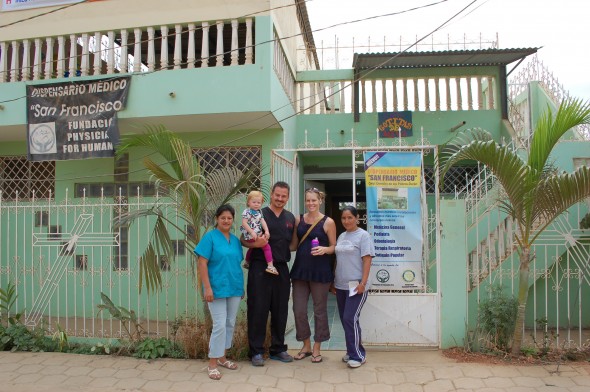Tom Sichi’s Long Journey to Emergency Medicine

Tom Sichi (Class of 1992), wife Cindy, and daughter Ayla in Guayaquil, Equador, where among other duties, Tom treated Hansen's Disease (Leprosy) patients.
After a long journey through graduate school (Master’s degree in public health), medical school, and now a four-year residency, I’m realizing my long-term goal of becoming an emergency physician, able to give back to underserved people in the world. I love the variety of patients and disease; no two days are ever alike. Emergency medicine (EM) is currently in a unique situation within our complex American medical model. My salary is not based on the payments of the patients, and I never have to ask if someone has insurance, which allows me to care for those who have slipped through the cracks in coverage. I have the chance to see into the lives of people and make a difference when they are most vulnerable.
I often use critical thinking skills to figure out the real reason people come into the department. Was it just a fall, or did they have an irregular heartbeat? Were they beaten? I have been able to use my public health training to bridge the gap between the medical world, which deals with the individual in isolation, and the world of social services and public health, which deals with that individual in the context of society. I think if more people could bridge this gap, we would have less recidivism in EM.
My training in epidemiology and biostatics (really tropical medicine/parasitology and the math behind medical literature) has also made it possible to hit the ground running in clinical and research settings in Ecuador, Mexico and Tanzania. For me, EM has two huge practical advantages to other types of medicine for practicing abroad. If you have a busy surgical practice, your office staff and nurses would not appreciate a month or so without work…you just can’t leave. Second, as an EM doctor, you become competent with everything from a runny nose to a gunshot wound to the chest. When treating patients abroad, you are often the only physician for miles. Where I was in Tanzania, there were less than 10 doctors per 100,000 people.
My eventual goal is to move back to Santa Barbara from Arizona to practice EM. I also want to start a clinic in a developing nation which utilizes local/indigenous health care providers working alongside western-trained physicians in a cost-effective and culturally sensitive manner.
